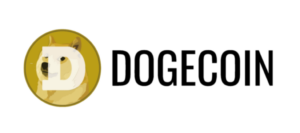Key Factor That Will Trigger Bitcoin’s Bull Run
Bitcoin experienced a significant drop in price, plunging to a four-month low of approximately $53,500, reflecting a decline of more than 9.3%. Despite notable Bitcoin sales in Germany and apprehensions surrounding Mt. Gox’s liquidation, the interplay of macroeconomic factors and sustained risk appetite in conventional markets hints at a robust potential for recovery.
The prevailing outlook for Bitcoin indicates that once specific supply constraints are alleviated, the market could witness a strong rebound. Several key factors suggest that Bitcoin may be on the cusp of a bullish trend.
Economic Growth in G-7 Countries:
The G-7, comprising the world’s leading economies, is presently experiencing economic expansion. This growth, coupled with elevated interest rates, is prompting investors to allocate more funds into riskier assets such as Bitcoin and stocks. The OECD’s leading indicator, which forecasts short-term economic trajectories, has exceeded 100, signaling robust and accelerating growth trends.
Interest Rate Cuts To Boost Bitcoin:
The forthcoming release of the June consumer price index (CPI) report by the U.S. Bureau of Labor Statistics is anticipated to reveal a 3.1% year-over-year increase, a slight decline from May’s 3.3% upsurge. This downtrend signifies progress towards the Federal Reserve’s 2% inflation target, potentially resulting in reduced borrowing expenses by year-end. Historically, diminished interest rates have spurred demand for Bitcoin, as evidenced earlier this year when lower-than-anticipated CPI reports bolstered investments in Bitcoin ETFs.
Tech Positivity To Support Bitcoin:
The current optimism on Wall Street towards the technology sector bodes well for Bitcoin. The ratio between the tech-centric Nasdaq index and the broader S&P 500 has reached unprecedented levels, indicating robust investor confidence. Bitcoin has historically thrived during periods of tech stock prosperity, aligning its performance with the growth of the tech market.
Concerns regarding a speculative bubble in the U.S. stock market appear unwarranted. According to TS Lombard, U.S. margin debt is expanding at a slower pace than equity market capitalization, signaling that market performance is not predominantly fueled by borrowed funds. Investor positions in both S&P 500 and Nasdaq futures are also nearly neutral, underscoring market stability.






